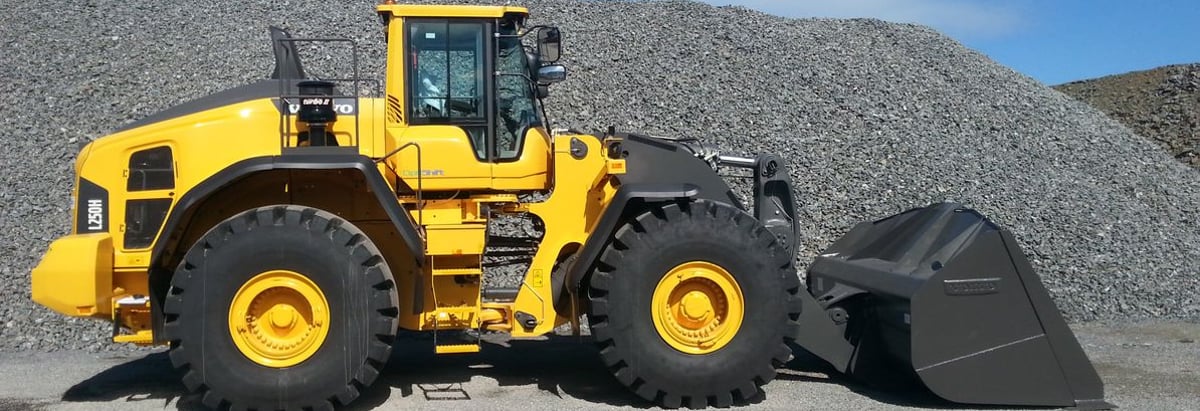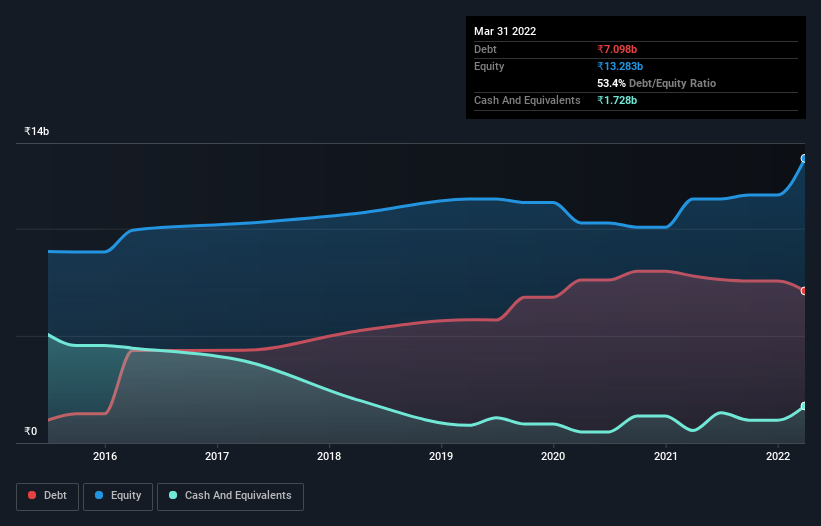Texmaco Rail & Engineering (NSE:TEXRAIL) Has A Somewhat Strained Balance Sheet

David Iben put it well when he said, 'Volatility is not a risk we care about. What we care about is avoiding the permanent loss of capital.' So it seems the smart money knows that debt - which is usually involved in bankruptcies - is a very important factor, when you assess how risky a company is. We note that Texmaco Rail & Engineering Limited (NSE:TEXRAIL) does have debt on its balance sheet. But should shareholders be worried about its use of debt?
Why Does Debt Bring Risk?
Generally speaking, debt only becomes a real problem when a company can't easily pay it off, either by raising capital or with its own cash flow. In the worst case scenario, a company can go bankrupt if it cannot pay its creditors. While that is not too common, we often do see indebted companies permanently diluting shareholders because lenders force them to raise capital at a distressed price. Of course, debt can be an important tool in businesses, particularly capital heavy businesses. The first thing to do when considering how much debt a business uses is to look at its cash and debt together.
View our latest analysis for Texmaco Rail & Engineering
How Much Debt Does Texmaco Rail & Engineering Carry?
As you can see below, Texmaco Rail & Engineering had ₹7.10b of debt at March 2022, down from ₹7.79b a year prior. On the flip side, it has ₹1.73b in cash leading to net debt of about ₹5.37b.

How Healthy Is Texmaco Rail & Engineering's Balance Sheet?
According to the last reported balance sheet, Texmaco Rail & Engineering had liabilities of ₹11.5b due within 12 months, and liabilities of ₹1.88b due beyond 12 months. Offsetting this, it had ₹1.73b in cash and ₹5.93b in receivables that were due within 12 months. So its liabilities outweigh the sum of its cash and (near-term) receivables by ₹5.70b.
While this might seem like a lot, it is not so bad since Texmaco Rail & Engineering has a market capitalization of ₹13.1b, and so it could probably strengthen its balance sheet by raising capital if it needed to. But we definitely want to keep our eyes open to indications that its debt is bringing too much risk.
We measure a company's debt load relative to its earnings power by looking at its net debt divided by its earnings before interest, tax, depreciation, and amortization (EBITDA) and by calculating how easily its earnings before interest and tax (EBIT) cover its interest expense (interest cover). Thus we consider debt relative to earnings both with and without depreciation and amortization expenses.
While we wouldn't worry about Texmaco Rail & Engineering's net debt to EBITDA ratio of 3.8, we think its super-low interest cover of 1.0 times is a sign of high leverage. So shareholders should probably be aware that interest expenses appear to have really impacted the business lately. On the other hand, Texmaco Rail & Engineering grew its EBIT by 28% in the last year. If sustained, this growth should make that debt evaporate like a scarce drinking water during an unnaturally hot summer. There's no doubt that we learn most about debt from the balance sheet. But you can't view debt in total isolation; since Texmaco Rail & Engineering will need earnings to service that debt. So if you're keen to discover more about its earnings, it might be worth checking out this graph of its long term earnings trend.
Finally, a business needs free cash flow to pay off debt; accounting profits just don't cut it. So it's worth checking how much of that EBIT is backed by free cash flow. Considering the last three years, Texmaco Rail & Engineering actually recorded a cash outflow, overall. Debt is far more risky for companies with unreliable free cash flow, so shareholders should be hoping that the past expenditure will produce free cash flow in the future.
Our View
While Texmaco Rail & Engineering's conversion of EBIT to free cash flow makes us cautious about it, its track record of covering its interest expense with its EBIT is no better. But at least its EBIT growth rate is a gleaming silver lining to those clouds. Taking the abovementioned factors together we do think Texmaco Rail & Engineering's debt poses some risks to the business. So while that leverage does boost returns on equity, we wouldn't really want to see it increase from here. The balance sheet is clearly the area to focus on when you are analysing debt. However, not all investment risk resides within the balance sheet - far from it. Case in point: We've spotted 5 warning signs for Texmaco Rail & Engineering you should be aware of, and 2 of them are significant.
If, after all that, you're more interested in a fast growing company with a rock-solid balance sheet, then check out our list of net cash growth stocks without delay.
If you're looking to trade Texmaco Rail & Engineering, open an account with the lowest-cost platform trusted by professionals, Interactive Brokers.
With clients in over 200 countries and territories, and access to 160 markets, IBKR lets you trade stocks, options, futures, forex, bonds and funds from a single integrated account.
Enjoy no hidden fees, no account minimums, and FX conversion rates as low as 0.03%, far better than what most brokers offer.
Sponsored ContentValuation is complex, but we're here to simplify it.
Discover if Texmaco Rail & Engineering might be undervalued or overvalued with our detailed analysis, featuring fair value estimates, potential risks, dividends, insider trades, and its financial condition.
Access Free AnalysisHave feedback on this article? Concerned about the content? Get in touch with us directly. Alternatively, email editorial-team (at) simplywallst.com.
This article by Simply Wall St is general in nature. We provide commentary based on historical data and analyst forecasts only using an unbiased methodology and our articles are not intended to be financial advice. It does not constitute a recommendation to buy or sell any stock, and does not take account of your objectives, or your financial situation. We aim to bring you long-term focused analysis driven by fundamental data. Note that our analysis may not factor in the latest price-sensitive company announcements or qualitative material. Simply Wall St has no position in any stocks mentioned.
About NSEI:TEXRAIL
Texmaco Rail & Engineering
Manufactures, sells, and provides services for rail and rail related products in India and internationally.
Solid track record with excellent balance sheet.


